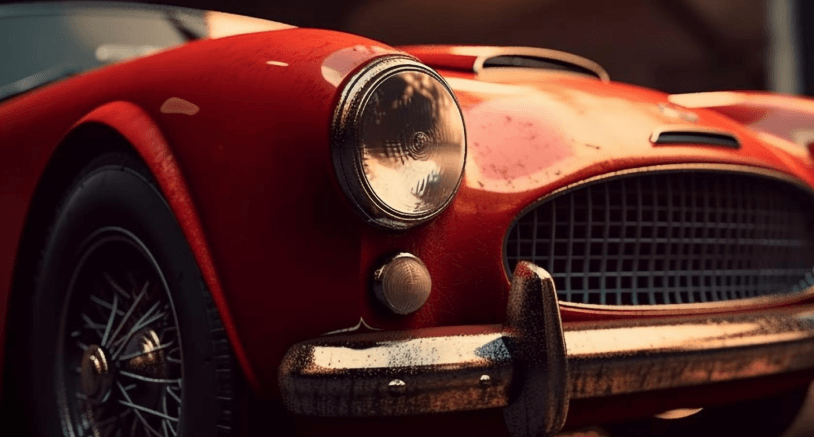
From Old to Collectible: Understanding the Value of Vintage Cars
Vintage cars hold a special place in the hearts of automotive enthusiasts. They are not merely old vehicles: they are treasures of automotive history, coveted for their timeless design, craftsmanship, and unique stories.
For that reason, in this article we will delve into the world of vintage cars, exploring the factors that contribute to their value and rarity. From iconic classics to obscure gems, we will unravel the mysteries surrounding vintage car collectibility, gaining a deeper understanding of why these machines continue to captivate car lovers worldwide.
Defining Vintage Cars: Age, Significance, and Desirability
Vintage cars have a distinct charm that sets them apart from modern vehicles. Because of that, in the next section we will explore how vintage cars are defined and what makes them unique in the automotive world. From the age criteria to the significance and desirability factors, we will uncover the essence of what makes a car truly vintage. Join us as we delve into the world of vintage cars and understand the factors that contribute to their allure and timeless appeal.
What Makes a Car Vintage?
Determining what qualifies as a vintage car can vary depending on different perspectives and regions. However, a common criterion is that a vehicle must be at least 20 to 25 years old to be considered vintage. Additionally, a vintage car often possesses historical, cultural, or technological significance that contributes to its desirability and collectibility.
The Quest for Limited Production
The scarcity of a particular vintage car model plays a significant role in its value and collectibility: limited production numbers, discontinued models, or unique variations make certain vintage cars exceptionally rare. These factors, combined with their historical importance or iconic status, contribute to their allure among collectors.
Factors Influencing Vintage Car Value
The value of vintage cars is not solely determined by their age or aesthetics: several factors come into play when assessing the worth of these automotive treasures. Therefore, the following section will explore the key elements that influence the value of vintage cars.
From historical significance and iconic status to condition and rarity, we will unravel the intricacies of what makes certain vintage cars highly sought after by collectors. Join us as we delve into the world of vintage car valuation and discover the factors that contribute to their enduring value.
Historical Significance and Iconic Status
Vintage cars associated with significant historical events, iconic figures, or groundbreaking innovations tend to hold immense value. Examples include classic sports cars, luxury vehicles favored by celebrities, or cars that played a pivotal role in motorsport competitions.
The Impact of Restoration and Originality
The condition of a vintage car greatly affects its value. While some collectors prefer untouched, original examples, others appreciate meticulously restored vehicles. A well-preserved original car with minimal modifications often commands a higher value due to its historical authenticity. Conversely, a carefully executed restoration can enhance a vintage car's aesthetic appeal and mechanical functionality.
Rarity and Demand
The combination of rarity and high demand significantly influences the value of vintage cars: limited production runs, unique features, or special editions make certain models highly sought after by collectors. In that sense, we can say that the intersection of scarcity and desirability often results in higher prices in the vintage car market.
Preservation and Appreciation of Vintage Cars
Preserving and appreciating vintage cars is more than just a hobby; it's a testament to the rich automotive heritage and craftsmanship of a bygone era. For that reason, in the next section we will delve into the world of vintage car preservation and the passion that drives collectors and enthusiasts to care for these automotive treasures.
From meticulous restorations to the dedication of classic car clubs and events, we will explore the efforts undertaken to ensure the legacy of vintage cars lives on. Join us as we celebrate the timeless beauty and historical significance of vintage cars and the individuals who strive to keep their spirit alive.
Passion for Collecting and Restoring
For many vintage car enthusiasts, collecting and restoring these automobiles is a labor of love: their dedication to meticulous restoration and maintenance ensures that these automotive treasures remain functional, beautiful, and true to their heritage. In that context, collectors and restorers strive to preserve the originality, historical accuracy, and integrity of vintage cars.
Classic Car Clubs and Events: Celebrating Automotive History
Classic car clubs and events provide platforms for vintage car enthusiasts to connect, showcase their vehicles, and share their passion. These gatherings celebrate automotive history, foster camaraderie among collectors, and allow the public to appreciate the beauty and craftsmanship of vintage cars.
In that sense, classic cars represent more than just a mode of transportation: they are tangible pieces of history, cherished for their design and cultural significance. Understanding the value and rarity of this kind of cars requires an appreciation for their historical context, uniqueness, and the passion that drives collectors and enthusiasts. As these automotive treasures continue to captivate generations, the world of vintage cars remains a captivating realm where timelessness and artistry converge.



